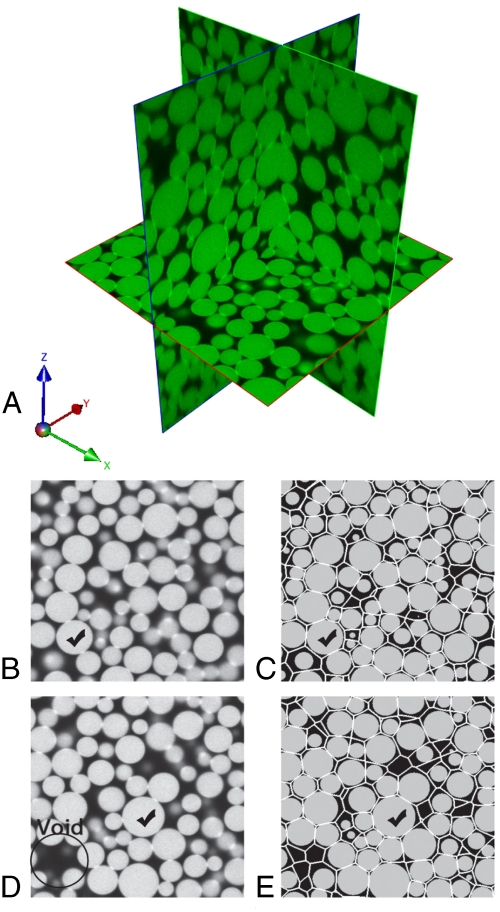Fig. 1.
(A) Three-dimensional representation of confocal images of an attractive emulsion packing in which the force of attraction 〈Fd〉 = 19 pN. Droplets are fluorescently labeled with Nile red dye and refractive index matched with the aqueous phase for transparency. Images are taken using a 63× oil immersion lens with a field of view of 65 μm in the xy plane. The 2D confocal slices and their reconstructed images are shown for repulsive (B and C) and attractive (D and E) packings. Ticks indicate two examples of the original spheres in the images and those found by the Fourier transform particle tracking algorithm. Navigation maps (white lines) are superimposed with the reconstructed packing (C and E) to identify cells belonging to particles. This mapping attributes each voxel of void space to the particle whose surface is closest to it. It unambiguously identifies neighbors, contacts, and cell volumes. As a function of attraction, the packings become looser and exhibit voids shown in D. These voids appear to occupy cells in the navigation map because particles above and below the confocal plane share void space in the third dimension.

